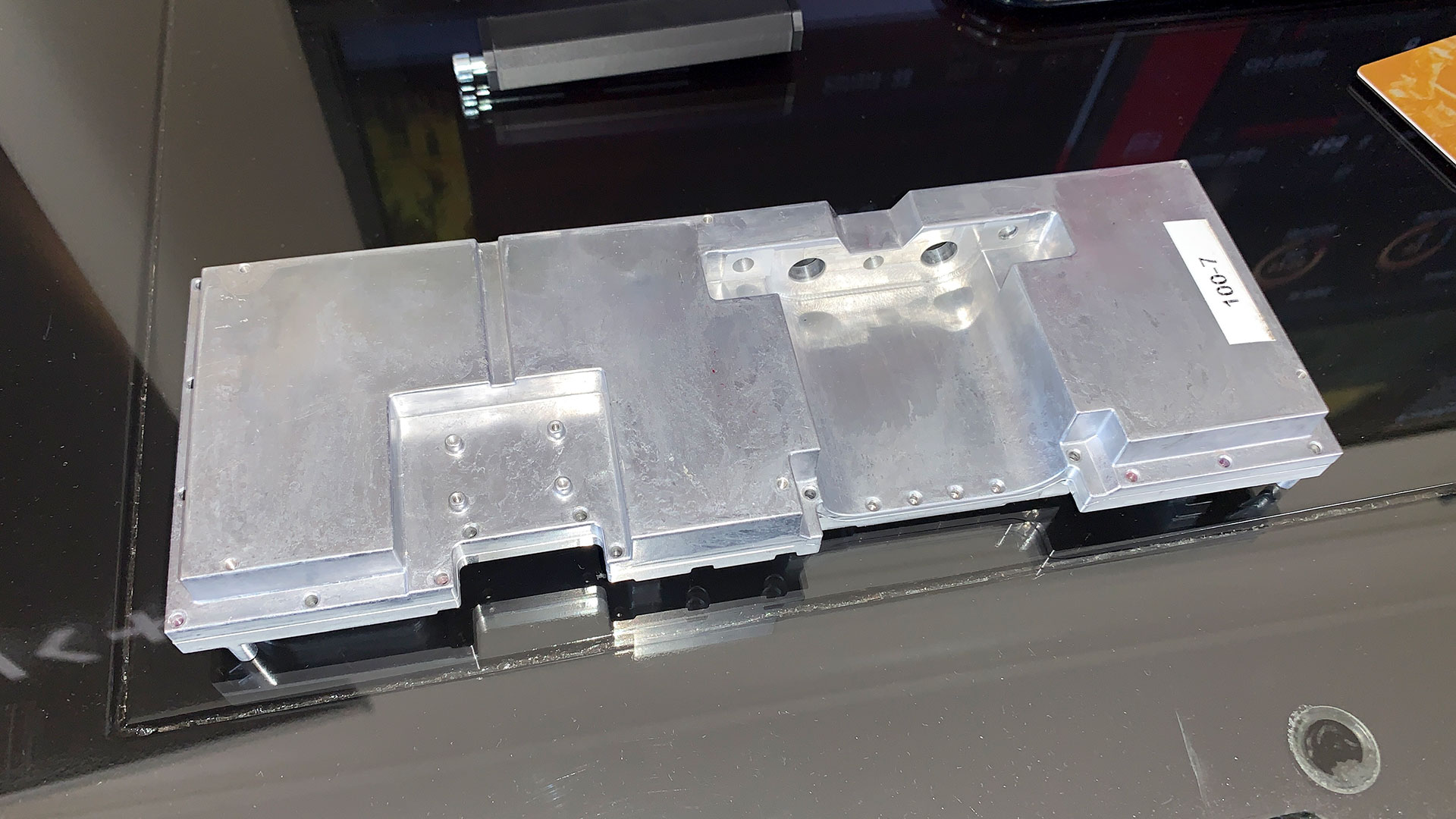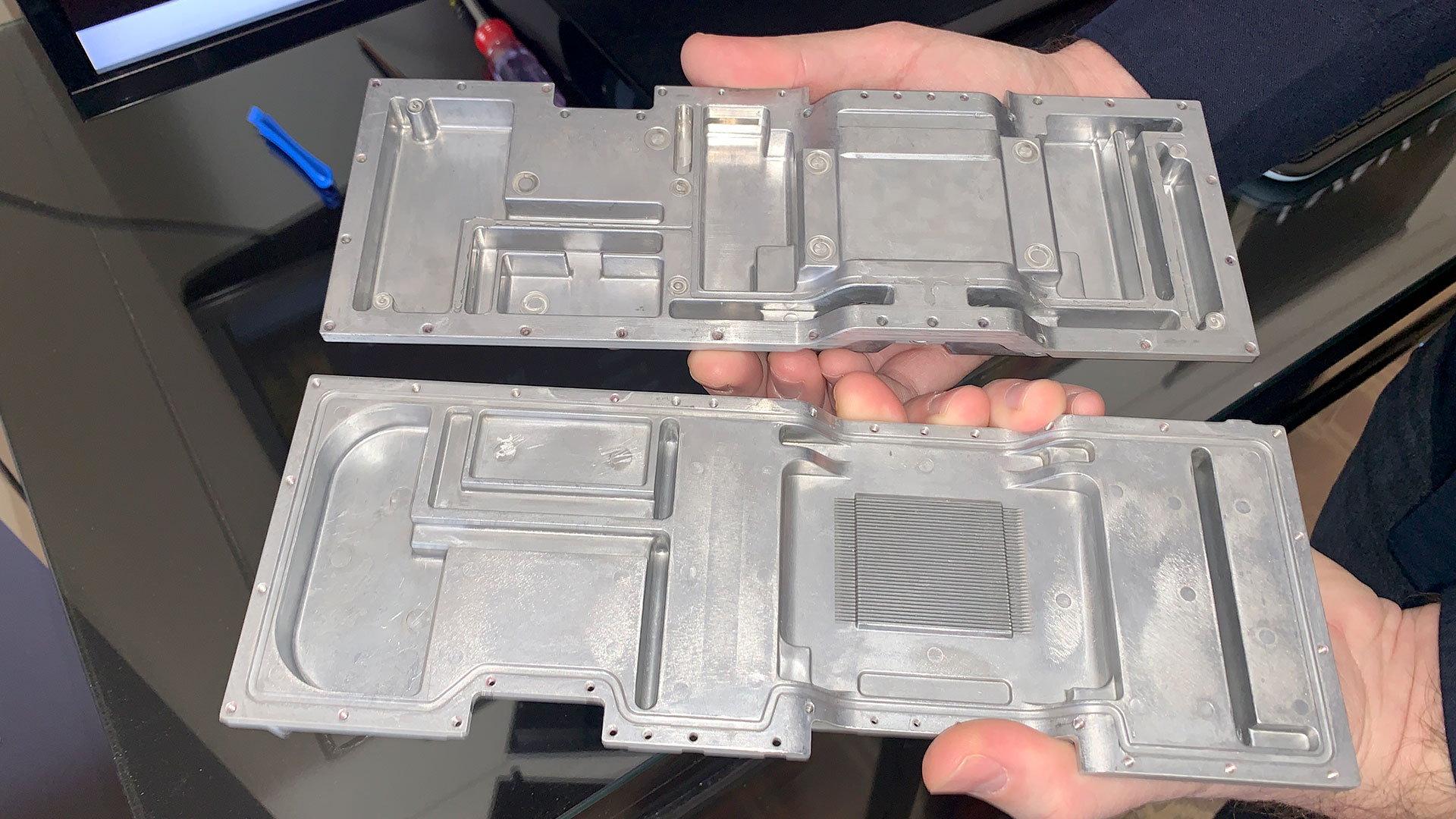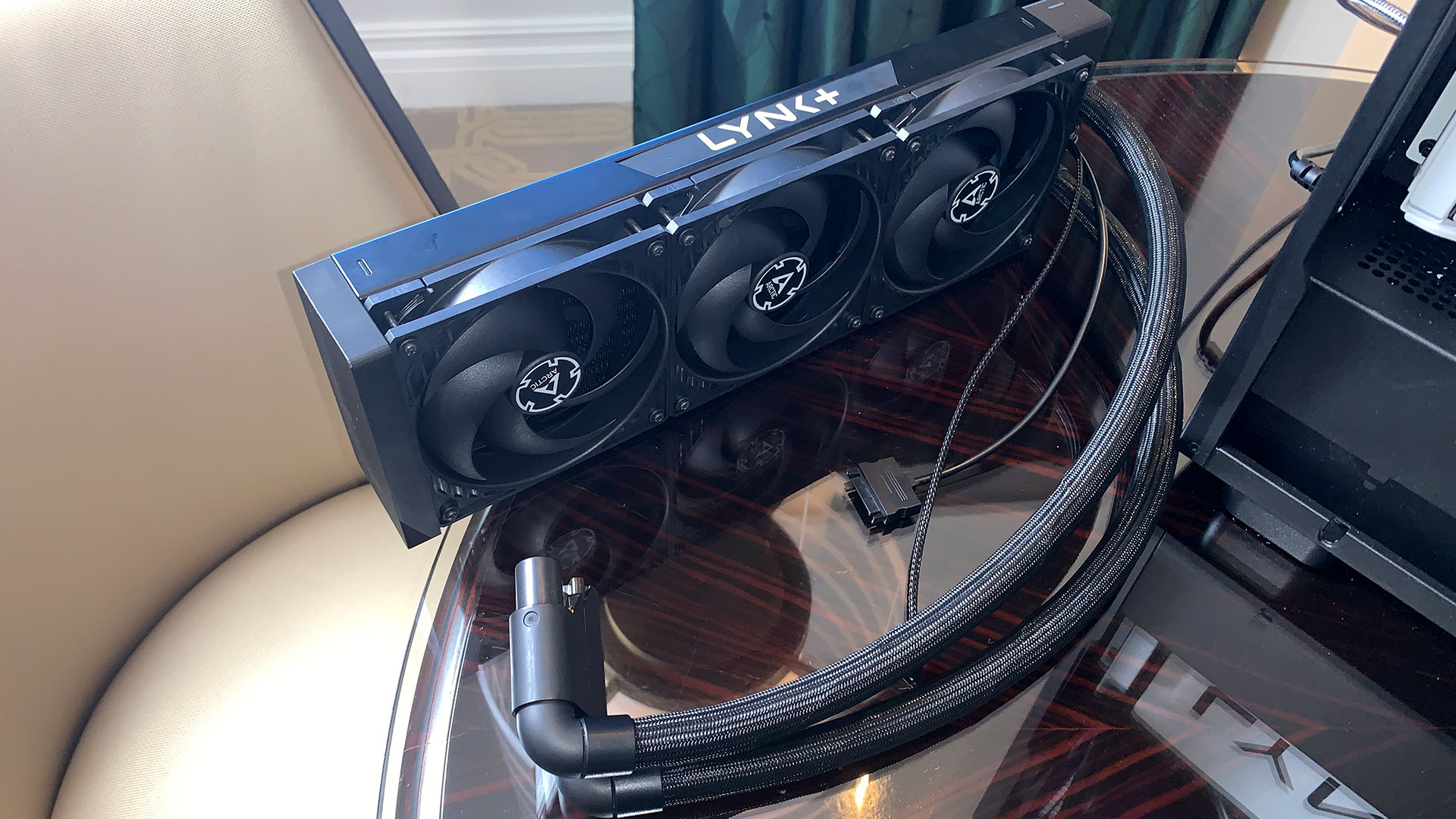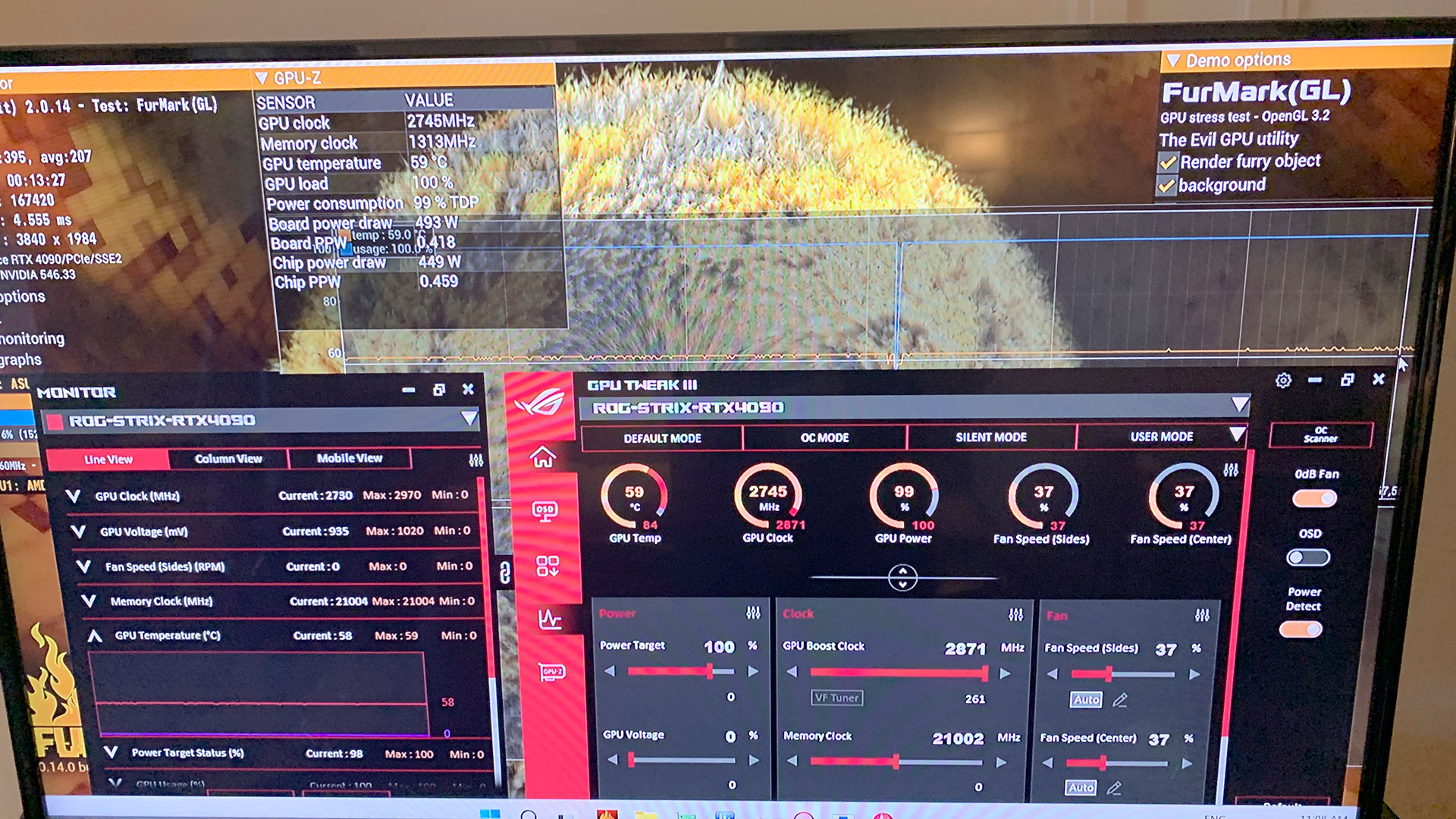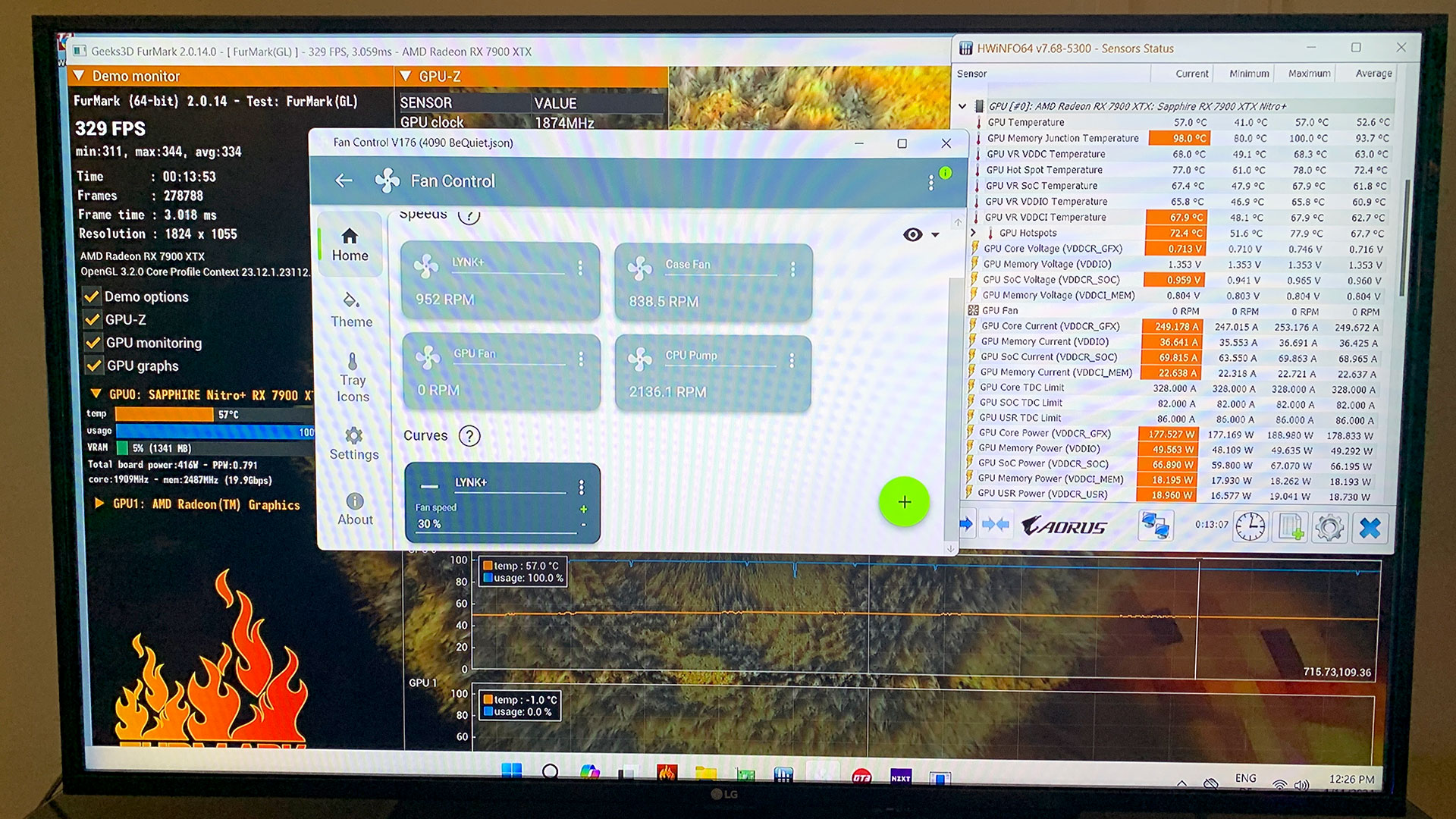We’ve seen plenty of liquid-cooled graphics cards over the years, and they fall into three categories: off-the-shelf AIO solutions from the graphics card vendors (e.g.,MSI RTX 4090 Suprim X Liquid), AIO solutions from graphics vendors that you add to your existing loop (e.g.EVGA RTX 3090 Kingpin Hydro Copper), and custom solutions where you find a compatible waterblock and replace your card’s cooler (e.g.EKWB’s various solutions). Lynk+ wants to alter the status quo and provide superior cooling performance on par with custom loops but with the ease-of-use and pricing associated with closed-loop AIO solutions.The company hopes to work with various graphics card vendors — it’s in talks with several graphics card companies, though at present, there don’t appear to be any firm commitments — to provide off-the-shelf solutions that are akin to the typical closed-loop AIO solutions. The difference is that these are not closed loops. Lynk+ has developed its own “superior” (we’ll save final judgments on that aspect for the future) quick connect solution, allowing you to potentially add components to your loop.And therein lies the difficulty. The new Lynk+ connector means there aren’t any other compatible cooling loops, CPU waterblocks, or support for other solutions. (The test system shows a CPU waterblock, but it’s just an NZXT AIO with a programmable display.) It’s the age-oldXKCD standards jokerearing its head yet again. Assuming Lynk+ can get graphics card partners — a potentially big ask — then it can build out the rest of its liquid cooling ecosystem.
Above is a demonstration of the ease of swapping between two compatible Lynk+ graphics solutions. Initially, the system had a prototype RTX 4090 GPU installed. After powering down, a screw is used to help connect/disconnect the tubing, and a prototype RX 7900 XTX card gets installed. The use of the (relatively long) screw is to prevent accidental damage to a motherboard or graphics card PCIe connection — some of the spring-loaded quick-connect adapters can require quite a bit of force. Anyway, provided you’re not the type of person to swap between Lynk+ GPUs several times a day, it shouldn’t be a problem.With its liquid cooler installed, Lynk+ demonstrated both GPUs running at very good temperatures. The custom waterblock on each card covers the GPU, VRAM, and VRMs as well, meaning it can bring temperatures way down if desired — a 50% fan speed on the radiator resulted in the RTX 4090 sitting at 59C even while drawing 449W of power. For the RX 7900 XTX, dropping to a 30% fan speed significantly reduced noise levels while still allowing the card to run at 57C — and 78C on the hot spot and 100C on the GDDR6 memory.
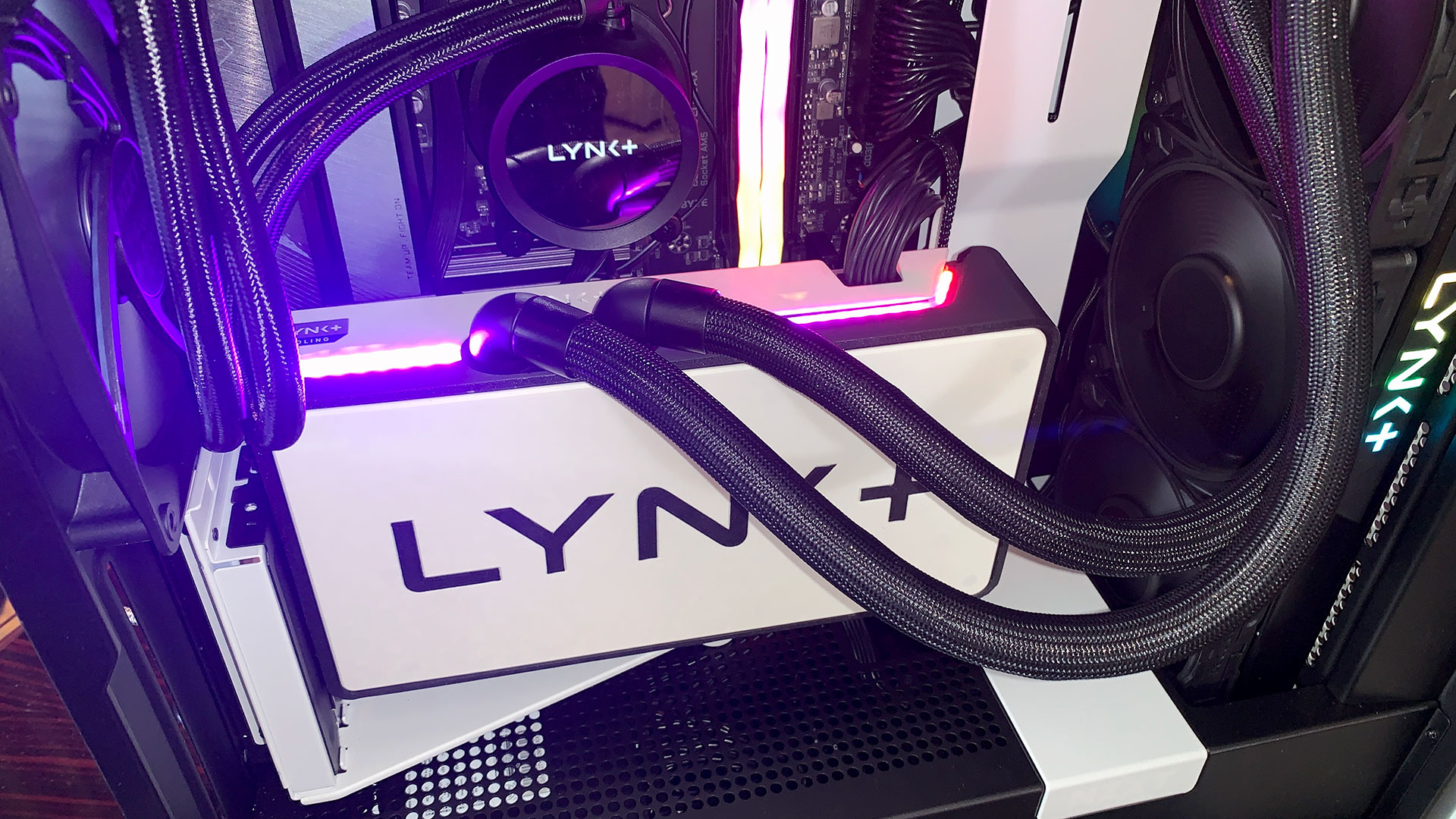
Lynk+ envisions graphics enthusiasts who want something better than the typical closed loop AIO will purchase an appropriate card from a partner, with a bundled radiator, if it’s the first time buying a Lynk+ graphics card. Initial prices will likely be higher, but over time, it hopes to match the cost of a high-end CPU AIO solution — roughly $150–$200.There’s no need for a separate reservoir as the GPUs handle that (though potentially, reservoirs could be an option in the future). The radiator and graphics cards will come pre-filled, and Lynk+ has areas within the radiator that allow for the capture of bubbles, regardless of orientation. That’s a drawback with closed-loop AIO solutions, as dissipation through the tubes over time can eventually lead to circulating air bubbles, and that can cause the pump to fail and/or reduce cooling efficiency.The pump is also part of the radiator solution. It uses a 3-phase motor with ceramic bearings, and provides for high flow rates. There could also be multiple radiator options, including 360, 240, 420, and 280 — we were shown the 360mm version, and 240mm seems the next most likely, but if the system proves popular we’d expect others to be made.
Once you have a system equipped with a Lynk+ solution, future upgrades potentially become more affordable. The cost of the die-cast coolers and connectors for a GPU should be less than that of a typical large air cooler and fans, so future GPU upgrades might not even carry a price premium relative to air-cooled models.And we’ll believe that when we see it. One of the main purposes of liquid cooling is to provide superior temperatures, which enables higher potential performance — either via factory overclocks or just by removing thermal constraints. And higher performance, as we know, goes hand in hand with higher prices, not to mention this will ultimately cater to a niche market.Absent direct graphics card partners, Lynk+ may opt to bring its coolers and radiator to market as a DIY kit, similar to what we’ve seen from EKWB and others. You’d need a compatible graphics card, and then you’d buy the kit and swap the cooler on your own. Obviously, that’s even more of a niche market than pre-assembled AIO cards. Availability is expected before the end of the year, in any event.If Lynk+ can make this work, we like the idea of upgradeable liquid-cooled graphics cards that can run cooler and quieter. Getting an alternative to the closed loop AIOs that provides superior cooling and the option to expand the cooling loop or upgrade to a new graphics card would be worth at least a modest price premium to some enthusiasts.
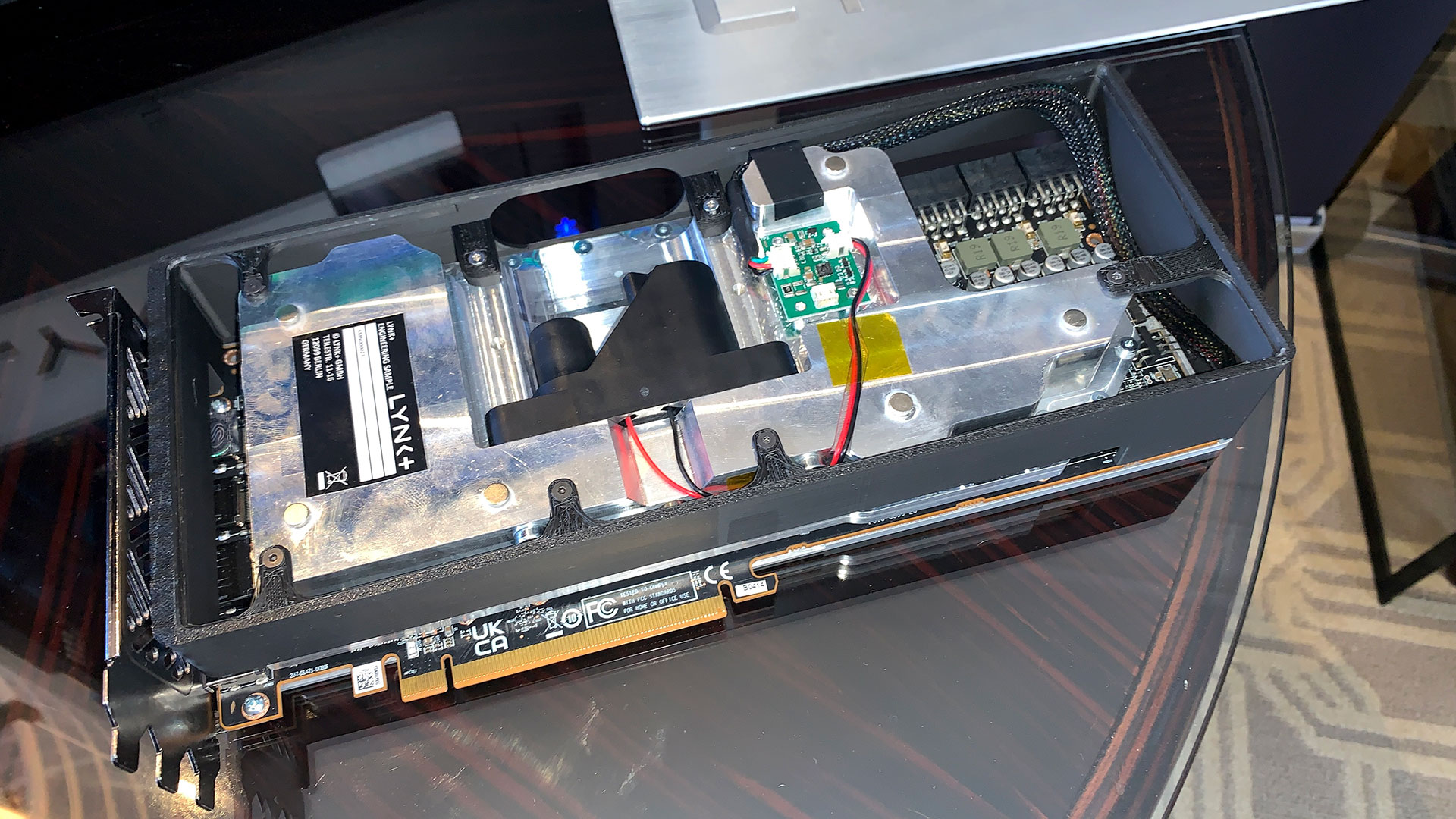
Get Tom’s Hardware’s best news and in-depth reviews, straight to your inbox.
Jarred Walton is a senior editor at Tom’s Hardware focusing on everything GPU. He has been working as a tech journalist since 2004, writing for AnandTech, Maximum PC, and PC Gamer. From the first S3 Virge ‘3D decelerators’ to today’s GPUs, Jarred keeps up with all the latest graphics trends and is the one to ask about game performance.
